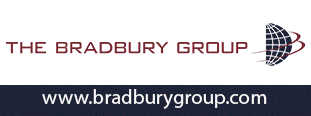Source: SEAISI
Mr Oh-Yoon Kwon, General Manager of The Korea Shipbuilders' Association (KOSHIPA), provided some insights into world's shipbuilding market and Korean shipbuilders' strategies and perspectives at the Asian Steel Conference, held recently in Singapore.
The intriguing part of the shipbuilding industry is that -with some exceptions- it is a single global market with no tariff or non-tariff barriers. Therefore, shipbuilders must rely on low-cost leadership and diversification instead of government protection. The market cycles of the industry follow closely the movements of the international shipping market. An increase in trade of goods will lead to higher freights and which will in turn lead to more new ship orders and increase in ship prices.
It is also very interesting to note that the title of low-cost leader has shifted from one country/region to another since the Second World War. Before 1945, the low-cost leader was United Kingdom before being taken over by Western Europe in the 1945 - mid 1950s period. For a long period starting mid 1950s until 1973, Japan was the leader of the world's shipbuilding industry. In 1974, Korea took over the title and became the low cost leader until the 1990s. Since then, not surprisingly the Chinese shipbuilders have captured the title.
Several strategic options are open to a country which is loosing its low-cost leadership status: differentiation, segmentation, diversification, or getting government protection. Korean shipbuilders have pursued 'value innovation' by diversifying into new ship development area like Super-Large LNG Carriers and Ice Breaker Ships. Secondly, they have also adopted 'high-value and differentiated strategy' via development of core technologies and products. They are rapidly moving away from dependence on overseas technologies by actively developing their own key technologies not only for tankers, containerships, bulk carriers but also for super-high-speed cargo ships and deluxe cruise ships. The nine stars of Korean shipbuilding industry is presented in the following table.
KOSHIPA 9 Stars
|
Company |
Established
|
Max. Ship Size (DWT) |
|
Hyundai Heavy Industries |
1972 |
1,000,000 |
|
Samsung Heavy Industries |
1974 |
1,000,000 |
|
Daewoo Shipbuilding & Marine Engineering |
1976 |
1,000,000 |
|
Hyundai Samho Heavy Industries |
1995 |
1,000,000 |
|
Hanjin Heavy Industries & Construction |
1937 |
150,000 |
|
Hyundai Mipo Dockyard |
1975 |
400,000 |
|
STX Shipbuilding |
1962 |
350,000 |
|
Sinha Shipbuilding |
1946 |
51,000 |
|
Dae Sun Shipbuilding & Engineering |
1945 |
30,000 |
The 9 members of KOSHIPA are the medium and large shipbuilders, however the country has another 120 small shipyards.
In the 2000s, Korean shipbuilders have been able to maintain global leadership through the adoption of 'renovation' strategy. They have increased their market share by keeping their strength of competitiveness and technology leadership. As a result, Korean shipbuilders have emerged as the world leader in shipbuilding industry and kept its position as the growth engine of Korean economy. Total value of ship exported in 2005 was USD 17.7 billion or 6.2% of total Korean export value.
Korean global market share of new ship order in 2006 (until September) was estimated at around 44%, followed by China (27%), Japan (12%), and Europe (10%). Total new order in 2006 (until September) is more than 15 million CGT (Compensated Gross Ton); with 40% comprising tankers, 32% containership, and 19% LNG carriers.
As in any industry, challenges lie ahead for Korean shipbuilding industry: fluctuating exchange rates, shortage of skilled workers, and dealing with the most important material for the industry: steel plates. Korean domestic plate price has dramatically been increased from 360,000 Won/ton (1st Qtr. 2001) to a peak of 645,000 Won in mid-2005. The plate price has been easing lately in 2006 but is still at a high level. Additionally, the industry suffers from a shortage of 2,600 skilled workers, estimated in 2006. The shortage is expected to increase to 2,800 in 2007 and reach 4,400 workers in 2008.
Korean domestic steel producers are not able to keep up with can not meet the growing demand for shipbuilding steel. The shortage reached more than 2.3 million tons in 2006, a sharp increase from the shortage of 367,000 tons registered in 2001. The shortage is expected to touch almost 2.5 million tons in 2008. Most of the additional steel needs have been fulfilled by Japanese and more recently Chinese steel imports. However, the gap is expected to narrow starting in 2009 as domestic steelmakers increase their production capacity. The following table shows supply/demand forecasts for shipbuilding steel in Korea.
Shipbuilding Steel Supply/Demand Forecasts
|
|
Production |
Demand |
Shortage
|
|
2005 |
3400 |
5333 |
1933 |
|
2006f |
3660 |
5921 |
2321 |
|
2007f |
3686 |
6102 |
2418 |
|
2008f |
4107 |
6587 |
2480 |
|
2009f |
4345 |
6425 |
2080 |
|
2010f |
5444 |
6360 |
916 |
|
2015f |
6016 |
6445 |
42 |
in '000 Tons
New capacities have been planned by major steel companies to increase production of steel plate in Korea. POSCO will add its capacity to reach about 4.8 million tpa in 2009, compared to current capacity of 3.6 million tpa. Dongguk will have additional 1.5 million tpa on top of its 2.4 million tpa current capacity. Hyundai Steel will install a new plate mill with 2 million tpa capacity. Furthermore, Hyundai Heavy Industries has bought a 20% stake in a Chinese plate mill to secure long term supply of shipbuilding plate.
On the bright side, Korean shipbuilders' profitability has improved as a result of productivity improvements deliveries of higher priced ships. The long term prospect of the industry appears good with the continued growth of the world economy which will lead increase in sea-borne trade volume. Korean shipbuilders recognise that in order to build the best quality and efficient ships they need to overcome challenges and collaborate with its partners including the steel producers. They have succeeded.




